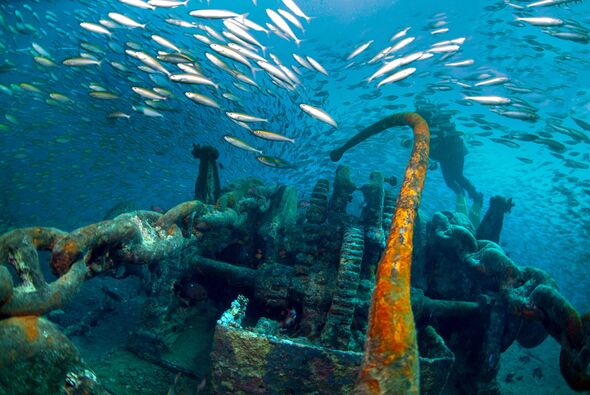World
British WWII Ship SS Thistlegorm Becomes Diver’s Haven

A British ship sunk by the Nazis during World War II has transformed into a sought-after diving destination. The SS Thistlegorm, a 413-foot freighter, rests on the seabed of the Red Sea after being targeted by a German bomber in 1941. Today, divers flock to explore the wreck, which is adorned with both marine life and remnants of its military cargo, offering a unique glimpse into history.
The wreck lies off the coast of Egypt’s Ras Muhammad National Park. First discovered in 1952 by French naval officer and oceanographer Jacques-Yves Cousteau, the site was located thanks to tips from local fishermen who had spotted the submerged vessel. During the war, German forces focused on disrupting vital supply routes across the seas, leading to the Thistlegorm’s sinking as it transported military equipment headed for Alexandria.
Equipped with a 4.7-inch gun and a heavy-calibre machine gun for anti-aircraft defense, the Thistlegorm was designated as a Defensively Equipped Merchant Ship (DEMS), according to the National Maritime Museum. Its rich cargo, including trucks, armoured vehicles, and motorcycles, has made it a popular attraction for divers, with The Times ranking it among the top ten wreck diving sites globally in 2007.
Unique Underwater Exploration
Divers exploring the Thistlegorm can navigate through its preserved remains, encountering not only military artifacts but also the vibrant marine life that inhabits the surrounding waters. The area is renowned for its ecological diversity, offering sightings of tuna, batfish, moray eels, and barracuda. Additionally, sea turtles have been reported in the vicinity, adding to the allure of this underwater paradise.
Located just 25 miles from Ras Muhammad National Park, the wreck benefits from the park’s rich biodiversity. The park is home to over 200 species of corals and around 1,000 species of fish, as highlighted by the Red Sea Project. This combination of historical significance and ecological abundance makes the Thistlegorm a prime destination for both adventure seekers and marine enthusiasts.
Preservation Efforts and Challenges
Despite its popularity, the Thistlegorm has faced deterioration over the years due to rust and damage from mooring dive boats. In response, the Hurghada Environmental Protection and Conservation Association has implemented measures to preserve the site. In December 2007, they installed 32 mooring buoys around the wreck and drilled holes in the hull to release trapped air, ensuring that divers and historians can continue to explore this iconic World War II relic.
The Thistlegorm is one of many ships lost since World War I, with some sinking in battles while others were intentionally scuttled. Each wreck contributes to the underwater landscape, serving as a sanctuary for marine life and a testament to maritime history. The SS Thistlegorm stands as a poignant reminder of the past, now thriving in the depths of the Red Sea, inviting divers to uncover its storied legacy.
-

 World4 days ago
World4 days agoCoronation Street’s Shocking Murder Twist Reveals Family Secrets
-

 Entertainment4 months ago
Entertainment4 months agoKate Garraway Sells £2 Million Home Amid Financial Struggles
-

 Entertainment3 months ago
Entertainment3 months agoAnn Ming Reflects on ITV’s ‘I Fought the Law’ Drama
-

 Health3 months ago
Health3 months agoKatie Price Faces New Health Concerns After Cancer Symptoms Resurface
-

 Entertainment4 weeks ago
Entertainment4 weeks agoCoronation Street Fans React as Todd Faces Heartbreaking Choice
-

 World4 weeks ago
World4 weeks agoBailey Announces Heartbreaking Split from Rebecca After Reunion
-

 Entertainment7 days ago
Entertainment7 days agoTwo Stars Evicted from I’m A Celebrity Just Days Before Finale
-

 World7 days ago
World7 days agoKevin Sinfield Exceeds Fundraising Goal Ahead of Final Marathons
-

 Entertainment3 months ago
Entertainment3 months agoCoronation Street’s Carl Webster Faces Trouble with New Affairs
-

 Entertainment3 months ago
Entertainment3 months agoWhere is Tinder Swindler Simon Leviev? Latest Updates Revealed
-

 Entertainment1 day ago
Entertainment1 day agoAndrew Pierce Confirms Departure from ITV’s Good Morning Britain
-

 Entertainment4 months ago
Entertainment4 months agoMarkiplier Addresses AI Controversy During Livestream Response





















